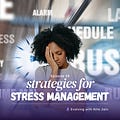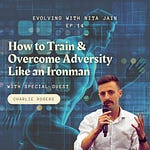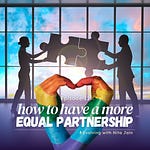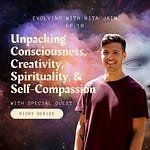Last time, we discussed how short periods of controlled stress can help us better adapt to future challenges. This week, we’re discussing strategies for stress management in order to maintain optimal function even during times of duress. We previously discussed how mindsets about stress affect our ability to successfully endure hardship.
A recent study involving more than 4,000 students in the United States found that 30-minute online classes aimed at encouraging the development of a growth mindset reduced levels of stress in teenagers and young adults. If the findings are coroborated by other studies, we may see classes like these rolled out more widely.
An Rx for Resilience
The American Psychological Association defines resilience as:
the process of adapting well in the face of adversity, trauma, tragedy, threats or significant sources of stress — such as family and relationship problems, serious health problems or workplace and financial stressors. It means “bouncing back” from difficult experiences.
In their book Resilience: The Science of Mastering Life’s Greatest Challenges, psychiatry professors Steven Southwick and Dennis Charney examined the human response to traumatic events. The duo studied prisoners of war, men who served in the special forces, and survivors of catastrophic events to uncover the mindsets associated with resilience. Through their research, Southwich and Charney elucidated 10 factors of resilience:
Adopt a positive attitude. Optimism is strongly related to resilience.
Reframe the situation. People who are resilient typically reframe a negative situation as an opportunity for growth, learning or change.
Focus on core beliefs. People who are steadfast in their commitment to values such as altruism often display more resilience.
Find a role model or father figure. Witnessing someone else overcome adversity can help strengthen your own resilience.
Face your fears. Confronting a challenge head-on instead of avoiding it will give you the confidence to successfully address future threats.
Turn to your faith or spirituality. A strong religious foundation can be a source of support for many people.
Seek out social support. Resist the urge to retreat into your shell and reach out to friends and family to help you navigate through stressful periods.
Exercise for improved mood and cognition, stress reduction, and gains in physical strength.
Inoculate against stress. Challenge yourself regularly in the areas of emotional intelligence, moral integrity and physical endurance.
Define your sense of purpose. Finding meaning in life can boost your mental fortitude during times of adversity.
The Three-Pronged Approach to Tackle Anxiety
Even with proper foundations in place, anxiety can still crop up and interfere with our ability to function. Clinical psychologist Linda Blair offers a three-pronged approach to tackle anxiety and prevent catastrophizing:
Accept your anxiety and channel it towards something positive like exercise, learning a new skill, or pursuing a passion. Stanford Psychologist Alia Crum suggests that we acknowledge the stress, embrace the reason for the stress as an opportunity to reconnect with what you care about, and utilize the stress response to achieve your goals.
Trying to check out from the stress response can lead to depression, anhedonia, or substance abuse because checking out from the stress response means also checking out from the things we care about.
Schedule daily “worry time” to offload or brain dump your concerns and take inventory of the things that cause you distress. Evaluate the probability of each disconcerting possibility actually taking place. Use the “best friend test” to ask yourself what you would advise your best friend to do in each situation, and take that action. Over time, this exercise can lead to less frequent anxiety.
Learn to self-soothe. Whenever you are overcome with anxiety, establish an interval—maybe two minutes—before you allow yourself to act. According to neuroscientist Andrew Huberman, stress can lead to proverbial tunnel vision, but we can inoculate ourselves against the negative effects of stress by manipulating our breathing patterns. Extending our exhales relative to the length of our inhales slows our heart rates and helps us relax.
The physiological sigh, which we previously talked about, is a tool that can calm our nervous systems by helping us offload excess carbon dioxide. The physiological sigh consists of two short inhales in a row through the nose followed by a long exhale through the mouth.
Your lungs consist of millions of little sacs called alveoli, and the second inhale is instrumental in inflating any air sacs that might have collapsed, allowing you to exhale more carbon dioxide during the sigh out.
Over time, this three-pronged approach, which consists of using your “worry energy” to tackle challenges, can help you feel less distressed when confronted with uncertainty.
Expect the Best, Prepare for the Worst
Nothing happens to the wise man that is against his expectation.
— Seneca
A Stoic technique espoused by philosophers like Epictetus, Marcus Aurelius, and Seneca called negative visualization can also help prepare us for unpleasant situations. Sometimes called premeditatio malorum (premeditation of evils), negative visualization consists of anticipating worst-case scenarios with the goal of developing a deeper sense of gratitude and being better prepared for future hardship.
In fact, 28-time Olympic medalist Michael Phelps used this technique to win Olympic gold in Beijing. Phelps had already won seven gold medals in swimming, and the only thing standing between him and the history books was the 200-fly, his signature event.
Near the beginning of the race, his goggles began to fill with water, but Phelps didn’t panic. His coach had frequently made him practice under such conditions should issues arise on the big day. Phelps had learned to count his strokes when swimming blind and cruised to victory despite the obstacle.
In the business world, the exercise of negative visualization is known as the pre-mortem method, a risk assessment tool that was originally developed by research psychologist Gary Klein. Here’s how it works in practice.
A CEO might switch gears during a weekly team meeting with the following: “I have bad news to share. Our project has failed spectacularly. Who can tell me what went wrong?”
This prompt encourages brainstorming about possible blindspots and helps teams envision and anticipate what could go wrong prior to a launch. Each proposed problem can be assessed for likelihood, impact, and ease of prevention. Going over proposed solutions to possible pitfalls can help teams more effectively prepare for future challenges.
The Sound of Silence
It’s an undeniable fact that the world is getting louder. In 2018, the World Health Organization designated noise an important public health issue. Inhabitants of large cities like New York, Paris, Mumbai, Buenos Aires, and Tokyo are being exposed to well over the recommended 40 decibels (dB) of noise each night. Rural areas tend to clock in at 30 dB, while restaurant conversation is 60 dB, and a running lawnmower is 90 dB.
Anything above 85 dB for extended periods can cause permanent hearing loss, but frequent exposure to noise over 50 dB has been linked to a multitude of health problems, including sleep disturbances, cognitive defects, and cardiovascular disease.
Hustle and Bustle of the City
In 2004, the Mayor of London published a report called Sounder City in which he outlined strategies to address industrial and transportation-associated noise pollution. Recommendations for quieter buses, reduced noise from roads, and aircraft noise control helped make London a quieter city.
Since then, other cities have taken note and implemented their own solutions. Washington, D.C.’s ban on petrol-powered leaf blowers went into effect earlier this year while New York City recently approved legislation to fine people who outfit their vehicles with noisy mufflers and exhausts.
Floating Away
Besides environmental considerations, researchers have also been examining the effects of sensory deprivation tanks on stress-related conditions. Clinical neuropsychologist Justin Feinstein studies fear and anxiety. In 2018, he and his colleagues decided to explore the use of flotation tanks as therapeutic tools.
They recruited 50 people diagnosed with different conditions including PTSD, social anxiety, and agoraphobia. Participants were asked to answer questionnaires before and after the float sessions and reported decreased levels of stress, muscle tension, pain, and depressive symptoms as well as improved energy, relaxation, and happiness after the therapy. These effects were more pronounced in the anxious group compared to the 30 non-anxious counterparts.
Despite the promising results, several study limitations should be kept in mind. The study was open-label and didn’t have a control group, making it difficult to compare the effects of flotation tanks to that of placebo. Furthermore, the observed reduction in stress levels could just be an indication of regression to the mean, a phenomenon whereby symptoms naturally improve with time. The heightened anxiety levels prior to the session could be artificially elevated on account of being in a new setting with unknown people, the equivalent of “white coat syndrome.”
To delve deeper, Feinstein and his colleagues decided to conduct another study examining changes in brain activity as a result of participating in either float sessions or reclining on a chair. Participants had their brains scanned using functional magnetic resonance imaging at the beginning and end of the interventions.
Float sessions seemed to uniquely decrease activity in the default mode network, a region of the brain activated during periods of wakeful rest. Previous research has shown that deactivating the DMN can quiet the brain’s internal chatter and reduce the risk of developing dementia.
Saturday in the Park
So what about those of us who don’t have regular access to sensory deprivation tanks? Eric Pfeifer, a psychotherapy researcher at the Catholic University of Applied Sciences Freiburg in Germany, has studied the effects of different types of silent experiences and says that silence is more attainable in everyday life than people think.
A 2019 study by Pfeifer and colleagues compared music therapy sessions in two different settings: one indoors in a uinversity lecture room and one outdoors in a city garden. Participants had the opportunity to experience both conditions separated by a week. Compared to the indoor sessions, the outdoor sessions seemed to trigger more relaxation, less boredom, and a greater sense of present orientation, or being in the moment.
“You don’t need to spend hours in silence to see benefits,” says Pfeifer. “It is likely better to have more frequency of silence for a few minutes at a time than a longer period of silence only once a week. We are so overstimulated by sound that just finding those places in your daily life where you can find some silence and trying to emphasise those can make a big difference.”
Episode Summary
Inherently, stress means we care about something important to us. The stress response can help us parse time more efficiently and focus more intently. Channeling the stress response to help overcome the situation at hand leads to more favorable health outcomes.
Developing resilience and managing anxiety can drastically improve coping skills. Anticipating what could go wrong through the practice of negative visualization can help us become better prepared for future challenges. Intentionally seeking out regular, short periods of stillness and quiet in our daily lives can help prevent rumination and lower levels of stress.
If you’d like to support the show, feel free to share this post or leave a tip! Music for this episode, “New Beginnings” by Joshua Kaye, was provided courtesy of Syfonix. This episode’s audio was edited using Descript.
















Strategies to Manage Stress & Anxiety